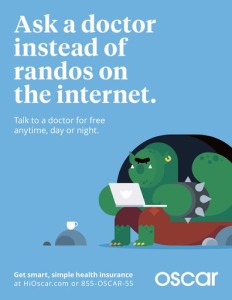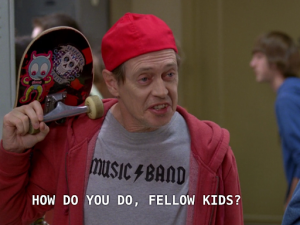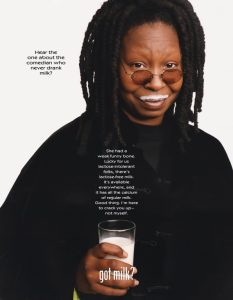Good writing follows the rules. Great writing is when you know how to break them.
Welcome – it’s week three of our Powerful Writing Series. If you’ve followed along with our previous iterations, you already know the drill here. And if you missed Volume 1 and Volume 2, catch up on them when you can.
No need for preamble, then. Let’s get right to it.
Colloquialism
Back when you were in school, you likely were taught that proper grammar and formality trump all. There wasn’t room for slight deviations from the one, correct way to speak and write. Grammar is essential, no arguments on that here – but as technology has evolved, our speech has changed along with it. We fire off quick texts, and that shorthand method of communication bled into our everyday vernacular. Colloquialism is when you use casual, informal language in writing. It sometimes breaks the rules of grammar, but what I love about writing is that once you know the rules, you know how to break them effectively.
Let’s take a look at some examples of colloquialism in advertising.
The State Farm fisherman commercial was a hit. It was irreverent and funny, and part of why it worked was the use of colloquial language. If our dear fisherman said “you must be quicker,” it wouldn’t hit quite like “oh ohh, you gotta be quicker than that.” Talk to your audience like they’re people you know, not numbers on a data sheet you want to max out.
This print collateral for Oscar Health Insurance knows who they’re talking to: millennials, who may not have the means to afford great medical care, but do have access to WebMD and forums of armchair psychologists. Using “randos” in lieu of “random internet strangers” creates a fun, tongue-in-cheek tone that brings the audience in on the joke. They aren’t being alienated or spoken down to for looking for medical advice in the wrong places. Instead, they’re being invited to experience something different.

Image source
All that said, you do have to be careful with colloquial language. Too much, and the facade is swept away, revealing that you don’t belong to your target audience, you just want to sell to them. I don’t want to name names, but if you follow a few big brands on Twitter, you might see a prolific use of Gen Z language. If you don’t actually know what the word cheugy means, you shouldn’t use it in advertising. And I don’t know what it means, so that’s the first and last time I’ll ever type that.

This is how some of those aforementioned advertisers look.
Why should you care?
It makes your message feel natural and off the cuff – not canned. People buy products from brands that feel relatable. Authenticity sells.
Hypophora
Hypophora is a tricky one. It’s like a rhetorical question, wherein someone asks a question that cannot be answered, or doesn’t expect an answer from the audience. In hypophora, the question is answered, but only by the original speaker. They pose an unanswerable question, then immediately answer it themselves. “To be, or not to be?” is rhetorical. “That is the question” is the hypophora. It’s incredibly melodramatic.
One of my favorite examples of hypophora is from the 1987 film Moonstruck. Nicholas Cage (yes, him again) plays Ronny, a forlorn baker who lost his hand in a bread accident, and his fiancée left him shortly after that (we’re told it’s because she couldn’t handle a one-hand man). Then he meets Cher, his brother’s fiancée, and falls in love. It’s all very Shakespearean dramady, but follow along with me here please.
Here is Ronny, posing his impossible question:
What is life?
And here’s where he ventures into hypophora:
They say bread is life. And I bake bread, bread, bread, and I sweat and shovel this stinkin’ dough in and out of this hot hole in the wall, and I should be so happy! Huh, sweetie!
In written text, hypophora can serve a few purposes. In political speeches, it lays out cause and effect. In movies, scripts, and novels, it can show a character unraveling, or their undercurrents of narcissism. It is used judiciously to make a character appear more interesting than maybe they truly are (see: Daisy Buchanan in The Great Gatsby).
How does it play out in advertising? Let’s see if you recognize this campaign.

Image source
The nineties and early aughts must have been a boon for dairy farmers. Every celebrity — Taylor Swift, Beyonce, Harrison Ford, Angelina Jolie, Dennis Rodman, and so many others – too many others – were featured in the Got Milk? dairy campaign. I think it’s clear to us which part of this campaign serves as the rhetorical question that sets the stage for hypophora….Got Milk? But what is the answer that only the speaker can provide? It’s not in the text; it’s in the photos.
The answer comes in the form of the milk mustache they all sport. So if Whoopi is asking a rhetorical question (got milk?) and answering it herself with physical comedy (yes, I’ve got milk, look at my face right now), then what is the point of this ad? It creates a shared unity across all the featured celebrities, and highlights what you, the audience, don’t have. Which is milk. They are looking at you, smug, because you don’t have milk. It must be so embarrassing for you, to not have milk. You should get some, now, you milkless loser.
To be clear – I’m not calling you a loser. I’m trying to articulate the pattern of question/answer that can make the audience feel isolated from the experience, and thereby willing to do whatever it takes to feel included again. That’s how you win hypophora in advertising. Show a clear difference between us (the common folk) and them (the paid celebrities, or models, or influencers, etc) and make it funny.
Why should you care?
Hypophora can be incredibly engaging. It can make your brand feel aspirational, or relatable, or funny. It feels interactive, even if we’re just looking at flat pictures on a flat screen. We charter a relationship through that.
Just a minute, before you go: let’s circle back to Moonstruck. It really is an incredible film, where the unhinged melodrama is buoyed by a strong family of characters. Rotten Tomatoes gave it a 94%. If you learned nothing from me or this series, that’s fine, just as long as you watch Moonstruck. Thanks for your time.